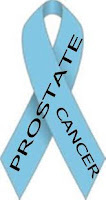- UK Guardian: Consumers and businesses in the UK lost an estimated £27 billion in 2012 due to cybercrime.[i]
- Ponemon Institute: The average annualized cost of cybercrime for 56 benchmarked U.S. organizations is $8.9 million per year.[ii]
- People’s Public Security University of China: In 2012, economic losses from Internet crimes in China totaled an estimated $46.4 billion (RMB 289 billion).[iii]
And it's growing annually.
So what does being gullible cost the average American?
See if you can find the cost to the average Senior Citizen in the US today.
What does this say about the need to investigate online information?
So what does being gullible cost the average American?
See if you can find the cost to the average Senior Citizen in the US today.
What does this say about the need to investigate online information?
[i] John Burn-Murdoch, “UK was the world’s
most phished country in 2012 – why is it being targeted?”, www.guardian.co.uk, last modified on February 27, 2013, http://www.guardian.co.uk/news/datablog/2013/feb/27/uk-most-phishing-attacks-worldwide.
[ii] “2012 Cost of Cyber Crime Study: United
States” Ponemon Institute, October 2012,
http://www.ponemon.org/local/upload/file/2012_US_Cost_of_Cyber_Crime_Study_FINAL6%20.pdf
[iii] “Internet crimes cost China over $46
billion in 2012, report claims”, thenextweb.com,
last modified January 29, 2013,
http://thenextweb.com/asia/2013/01/29/china-suffered-46-4b-in-internet-crime-related-losses-in-2012-report/.














